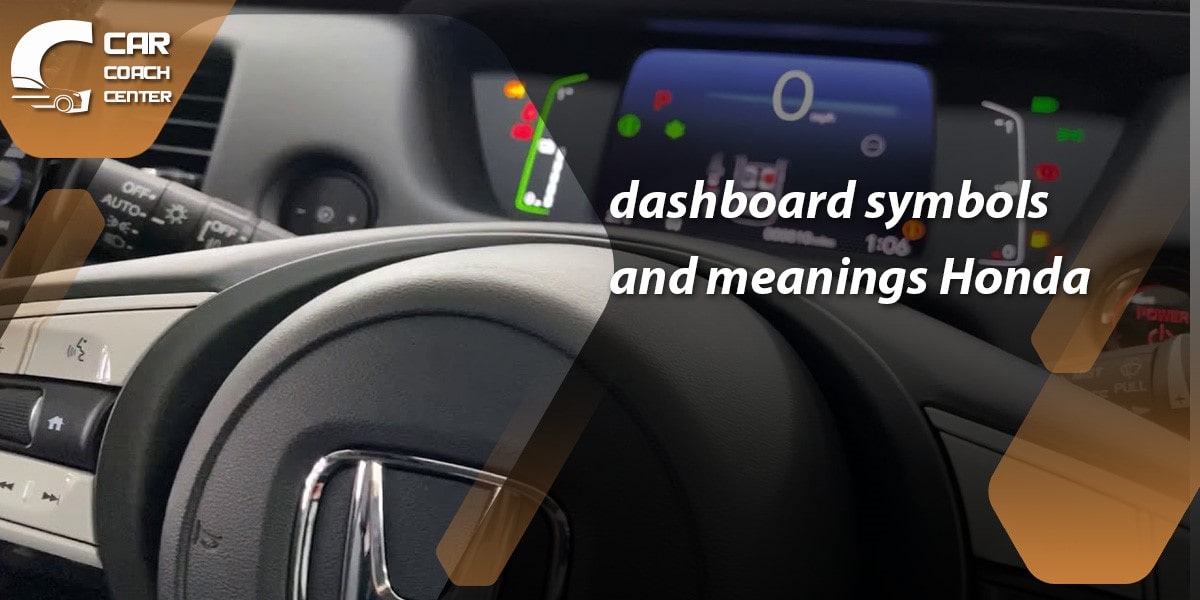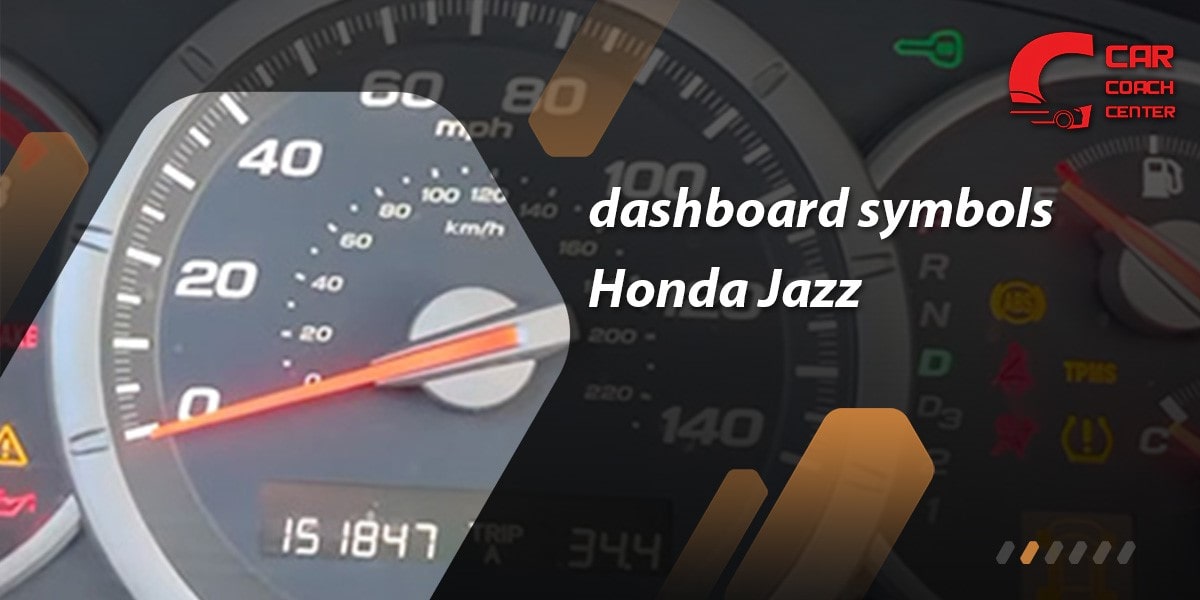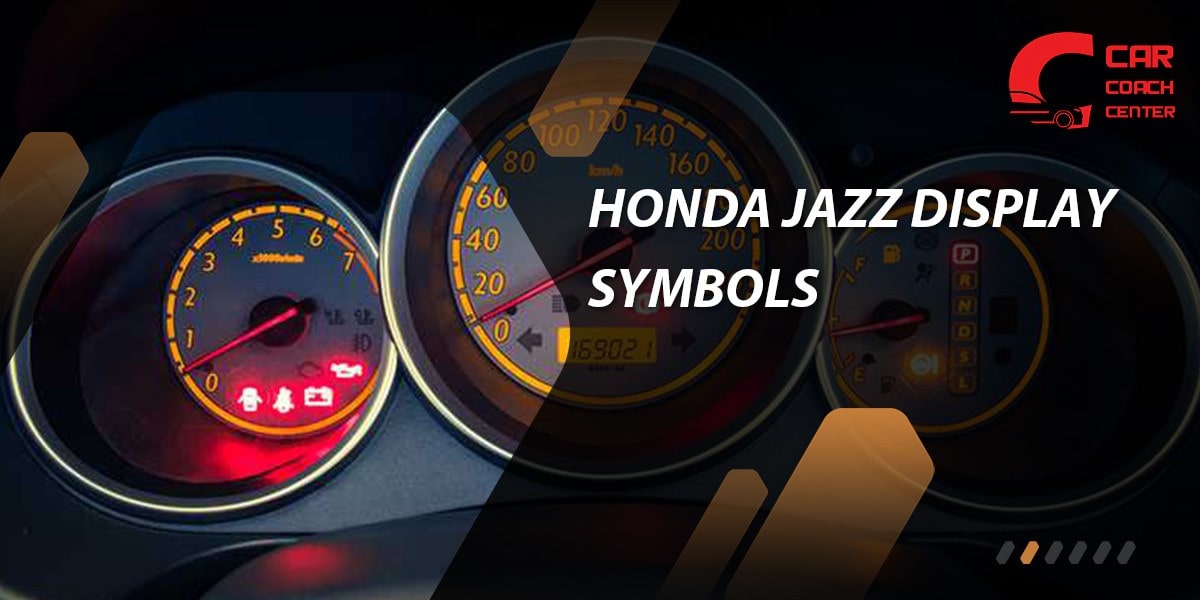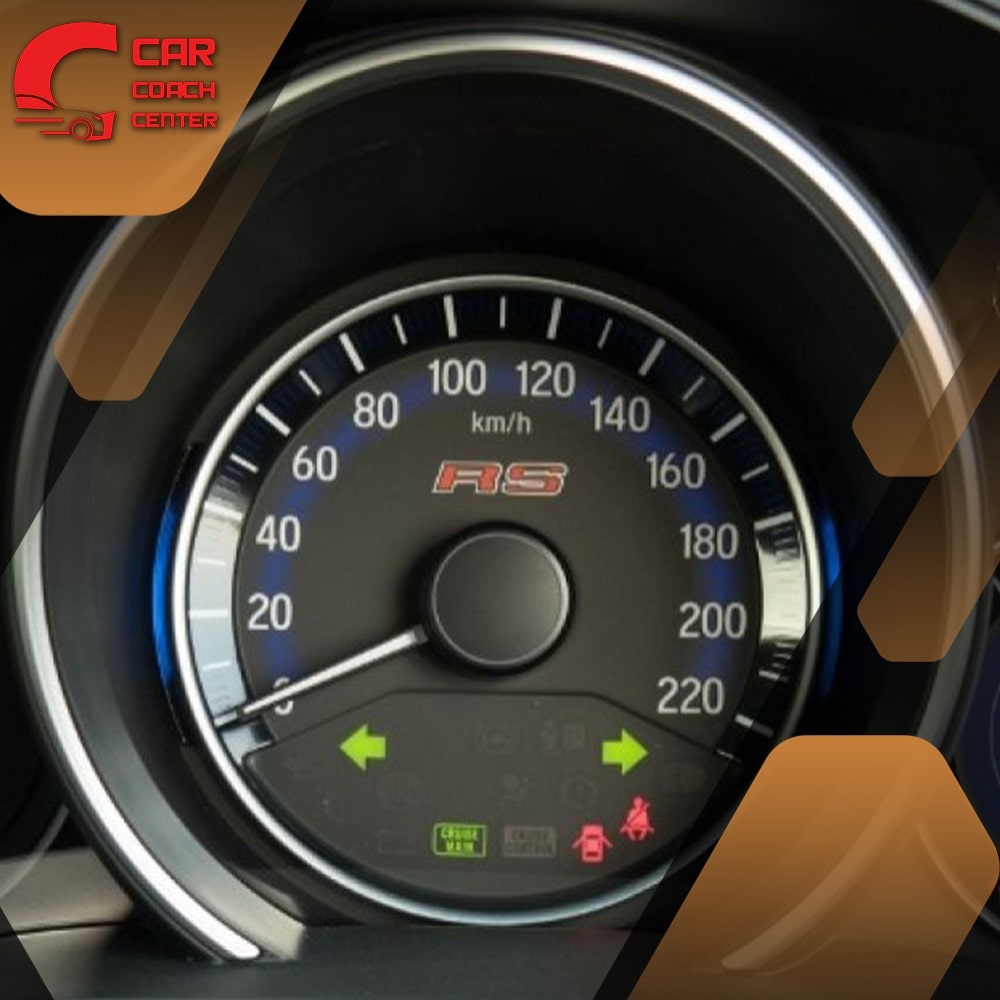Honda jazz dashboard symbols meaning
Welcome to CarCouchCenter.com! As a proud Honda Jazz owner, you’ve probably encountered a myriad of dashboard symbols lighting up your driving experience. These enigmatic icons, resembling a cryptic language, often leave drivers perplexed and uncertain about their meanings.
Fret not, for in this comprehensive guide; we will embark on a journey of understanding the symbolism behind the Honda Jazz dashboard symbols. Like a symphony of lights, each icon plays a crucial role in communicating vital information about your vehicle’s health, performance, and safety. Whether it’s a mysterious warning light, a reassuring indicator, or a simple reminder, this article aims to empower you with knowledge.

Get ready to decode the language of your dashboard as we shed light on the meaning and significance of the most commonly encountered symbols. So, fasten your seatbelts and join us in unraveling the secrets beneath those blinking lights, ultimately ensuring a smoother and safer drive on the road ahead. Let’s dive in and explore the fascinating world of Honda Jazz dashboard symbols!
Decoding the Enigmatic: Unraveling the Honda Jazz Dashboard Symbols
As you sit behind the wheel of your Honda Jazz, you are greeted by an array of dashboard symbols, each representing vital information about your vehicle. Understanding these enigmatic icons can be the key to maintaining your car’s health and ensuring a safe driving experience. In this section, we will delve into the most common and perplexing dashboard symbols found in the Honda Jazz and shed light on their meanings.
The Check Engine Light (Malfunction Indicator Lamp)
The infamous check engine light, often represented by an engine-shaped icon, is arguably one of the most anxiety-inducing symbols for drivers. It indicates that your vehicle’s onboard diagnostic system has detected a potential issue with the engine, emissions, or other crucial components. While the problem may vary in severity, it’s essential to pay attention to this warning. A quick visit to a certified mechanic or an auto service center can help identify the underlying cause and prevent potential damage.
Tire Pressure Monitoring System (TPMS) Warning Light
Typically depicted as an exclamation mark inside a horseshoe-like shape, this symbol alerts you when one or more of your tires have low pressure. Underinflated tires can lead to decreased fuel efficiency, reduced handling, and tire blowouts. When this light illuminates, check your tire pressure promptly and inflate them to the recommended levels.
Battery Charge Alert
When you see a battery icon on your dashboard, it indicates an issue with the electrical charging system. It could be due to faulty batteries, alternators, or other charging system components. Ignoring this warning might result in a dead battery, leaving you stranded. Seek professional assistance to diagnose and rectify the problem.
Oil Pressure Warning
The oil can icon signifies low oil pressure, leading to engine damage if not addressed promptly. Low oil levels or problems with the oil pump could trigger this warning. Stop the vehicle immediately, check the oil level, and top up if needed. If the problem persists, consult a mechanic for a thorough inspection.
Brake System Alert
The brake system warning light, often represented by an exclamation mark inside a circle within parentheses, indicates issues with the braking system. It could be due to low brake fluid, worn brake pads, or a malfunction in the braking system. Your safety is paramount, so have your brakes inspected and repaired immediately.
Airbag System Warning
This symbol, usually depicted as an inflated airbag or a seated person with an airbag, signals a problem with the system. In an accident, faulty airbags may fail to deploy or deploy unexpectedly, posing a safety risk. Have the airbag system checked by a professional immediately to ensure it functions correctly when needed.
A Symphony of Icons: Understanding the Language of Honda Jazz Dashboards
Imagine your Honda Jazz dashboard as a symphony of icons, each playing its unique role in communicating vital information about your car’s health and performance. Like musical notes, these icons form a language that guides you through your driving experience. In this section, we will take a closer look at the fascinating array of symbols adorning your dashboard and explore the meanings behind each one.
Temperature Warning Light
Often depicted as a thermometer or waves with an exclamation mark, the temperature warning light alerts you when your engine is overheating. Ignoring this warning could lead to severe engine damage, so it’s crucial to pull over immediately, allow your engine to cool down, and check the coolant level. If necessary, seek professional assistance to diagnose and resolve the cooling system issue.
Seat Belt Reminder
Safety should always take center stage, and the seat belt reminder symbol emphasizes just that. Represented by a seated figure with a seat belt, this icon is a gentle reminder to fasten your seat belt before hitting the road. It’s a simple yet effective measure to safeguard you and your passengers.
Fuel Level Indicator
The fuel level indicator, often displayed as a gas pump or gauge, informs you about the fuel remaining in your tank. Running out of fuel can be inconvenient, so keep an eye on this symbol to plan your refueling stops accordingly.
Cruise Control Indicator
If your Honda Jazz is equipped with cruise control, this symbol, usually represented by the letter “CRUISE” or a speedometer with an arrow, lets you know when the system is active. Cruise control can enhance your driving comfort on long journeys by maintaining a constant speed, but always remember to stay attentive and ready to take control when needed.
High Beam Indicator
Often depicted as a headlight with horizontal lines, the high beam indicator lights up when your high beams are activated. It serves as a reminder to switch back to low beams when oncoming traffic or driving in urban areas to avoid blinding other drivers.

ABS Warning Light
Suppose your Honda Jazz has an Anti-lock Braking System (ABS). This symbol, typically depicted as “ABS” or the letters surrounded by a circle, illuminates briefly during the vehicle’s startup. If it remains on or lights up while driving, it indicates a potential issue with the ABS. Have it checked by a professional to ensure optimal braking performance.
Navigating the Unknown: Your Guide to Honda Jazz Dashboard Symbols
As you embark on your driving journey with your Honda Jazz, the dashboard becomes your control center, relaying crucial information through various symbols and indicators. It’s common to feel uncertain when a mysterious icon lights up, leaving you unsure about its meaning and significance.
In this section, we will act as your trusty navigator, providing a comprehensive guide to the various Honda Jazz dashboard symbols and helping you confidently navigate the unknown.
Electronic Stability Control (ESC) Indicator
The ESC symbol, often represented by a car skidding or swerving, illuminates when your car’s Electronic Stability Control system is engaged. ESC helps maintain control during challenging driving conditions by selectively applying brakes to individual wheels. While this system enhances vehicle stability, adapting your driving to road conditions is crucial.
Adaptive Cruise Control (ACC) Symbol
If your Honda Jazz is equipped with Adaptive Cruise Control, you’ll encounter this symbol, which typically depicts a car with radiating waves. ACC helps you maintain a safe distance from the vehicle ahead by automatically adjusting your car’s speed. Pay attention to the road and be prepared to intervene when necessary, as ACC is not a substitute for attentive driving.
Lane Departure Warning (LDW) Indicator
Represented by a car leaving its lane or lane markings, the Lane Departure Warning system alerts you when your car drifts out of its lane without signaling. LDW is designed to enhance safety by preventing unintended lane departures, but it’s essential to stay engaged and intentionally use your turn signals when changing lanes.
Engine Oil Level Warning
When your engine oil level is low, a symbol resembling an oil can with a dripping drop will illuminate the dashboard. Low engine oil levels can lead to engine damage, so check your oil level regularly and top up as needed to ensure proper lubrication.
Brake Fluid Warning
The brake fluid warning symbol, often depicted as a circle with two semi-circles on each side, indicates a drop in brake fluid levels. Low brake fluid can compromise braking performance, so have the brake system inspected and the fluid topped up or replaced if necessary.
Blind Spot Information System (BSI) Indicator
If your Honda Jazz is equipped with Blind Spot Information System, you’ll find this symbol, which typically looks like a car with warning lines on both sides. BSI helps detect vehicles in your blind spots and warns you of potential dangers during lane changes. While BSI enhances safety, always shoulder-check before changing lanes for complete awareness.

From Blinking Lights to Hidden Messages: Cracking the Code of Honda Jazz Dashboards
Your Honda Jazz dashboard is more than just an assortment of blinking lights; it’s a sophisticated communication hub that relays vital information about your car’s health and performance. Beyond the obvious indicators, hidden messages are waiting to be unraveled. In this section, we embark on a journey of discovery, delving into the intricacies of Honda Jazz dashboard symbols and revealing the secrets behind their design and functionality.
The Evolution of Dashboard Symbols
The evolution of dashboard symbols is a fascinating tale that mirrors the advancement of automotive technology. From the humble beginnings of simple icons for oil pressure and battery charge to today’s complex warning lights and driver-assistance indicators, dashboard symbols have come a long way. We explore the transformation of these symbols and how they adapt to the ever-changing landscape of automotive innovation.
The Language of Colors and Lights
Beyond the shapes and icons lies the subtle language of colors and lights. The choice of colors in dashboard symbols carries meaning and context. For instance, red often signifies urgency or a serious issue that requires immediate attention, while green represents a system’s readiness or normal operation. We delve into the psychology of colors and lights used in Honda Jazz dashboard symbols and how they influence our responses as drivers.
Easter Eggs and Hidden Messages
Automakers, including Honda, sometimes inject fun into their designs by incorporating hidden messages or “Easter eggs” within dashboard symbols. These clever touches add an element of surprise for observant drivers. We uncover some of the delightful hidden messages found in Honda Jazz dashboards, making your driving experience all the more enjoyable.
User-Friendly Icons and Intuitive Design
Dashboard symbols serve a vital purpose in conveying complex information quickly and efficiently. We explore the principles of user-friendly design in creating dashboard icons that are intuitive and easily understandable. Honda’s commitment to usability and driver convenience shines through in its carefully crafted symbols, ensuring drivers can quickly grasp essential information while staying focused on the road.
The Role of Advanced Driver-Assistance Systems (ADAS)
As automotive technology advances, Honda Jazz dashboards now feature an array of icons related to Advanced Driver-Assistance Systems (ADAS). These systems, such as Lane Keeping Assist, Collision Mitigation Braking, and Traffic Sign Recognition, work behind the scenes to enhance safety and convenience. We look closer at how ADAS icons communicate crucial information to drivers and contribute to a safer driving experience.
Lights, Warnings, and Indicators: How to Interpret Honda Jazz Dashboard Symbols
Your Honda Jazz dashboard is a visual symphony, employing diverse lights, warnings, and indicators to communicate essential information about your vehicle’s status. Mastering the art of interpreting these symbols is crucial for every driver, as it empowers you to take prompt action when needed and ensure your car’s optimal performance and safety. In this section, we provide a comprehensive guide on effectively interpreting Honda Jazz dashboard symbols.
Understanding the Three Categories of Symbols
Honda Jazz dashboard symbols can be broadly categorized into warning lights, indicator lights, and informational lights. Warning lights, such as the check engine light and the oil pressure warning, signal potential issues that require immediate attention.
Indicator lights, like the turn signal and high beam indicators, inform you about the status of specific features in your car. Lastly, informational lights, such as the seat belt reminder and fuel level indicator, provide essential information about your car’s condition and operation.
Deciphering the Icons: A Symbol-to-Function Guide
With a vast array of icons adorning your dashboard, it’s easy to feel overwhelmed. We provide you with a comprehensive symbol-to-function guide, decoding the meanings behind each icon. From engine-related warnings to tire pressure monitoring and electronic systems, you’ll gain a clear understanding of the functions each symbol represents.
Recognizing the Severity Levels
Not all dashboard symbols are equal in urgency. Some symbols indicate minor issues that don’t require immediate action, while others demand immediate attention to prevent potential damage or accidents. We help you distinguish between critical warnings and less severe notifications, enabling you to prioritize your responses appropriately.
Responding to Dashboard Warnings
Knowing how to respond is crucial when a warning light illuminates your Honda Jazz dashboard. We provide a step-by-step guide on when specific warning lights appear, including when to pull over immediately, when to seek professional assistance, and when it’s safe to continue driving to the nearest service center.
Don’t Ignore the Informational Lights
While informational lights may not be as urgent as warning lights, they should be noticed. These lights provide valuable insights into your car’s condition and can help you avoid potential problems. For instance, the fuel level indicator ensures you don’t run out of gas unexpectedly, and the seat belt reminder promotes safety for you and your passengers.

Empowering Drivers: Mastering Honda Jazz Dashboard Symbols for a Safer Drive
As a responsible Honda Jazz driver, understanding and mastering the dashboard symbols is crucial to ensuring a safer and more enjoyable driving experience. With an ever-increasing array of technology and features in modern vehicles, dashboard symbols play a vital role in communicating vital information. In this section, we delve into the practical aspects of mastering Honda Jazz dashboard symbols and how they empower you as a driver for a safer journey on the road.
Know Your Car: Refer to the Owner’s Manual
The first step to becoming a dashboard symbol expert is familiarizing yourself with your Honda Jazz owner’s manual. This comprehensive guide provides detailed information about every symbol, explaining their meanings and the appropriate actions to respond to each. Keeping the owner’s manual accessible in your car lets you quickly reference and clarify any symbol you encounter.
Regular Dashboard Checks: A Proactive Approach
Develop the habit of conducting regular dashboard checks before and during your drives. As you start your car, observe each symbol’s illumination, ensuring they follow the normal startup sequence. Please pay attention to any warning lights or unexpected changes, as they may indicate potential issues that need your attention.

Practice Makes Perfect: Memorize Common Symbols
While it may initially seem overwhelming, memorizing the most common dashboard symbols can greatly enhance your driving experience. Focus on learning the warning lights, such as the check engine light, oil pressure warning, and tire pressure monitoring system, as they are the most critical for vehicle health.
Stay Calm and Respond Accordingly
Encountering a warning light while driving can be stressful, but remaining calm is essential. Panicking or ignoring the symbol can lead to further complications. Instead, pull over safely if necessary and refer to your owner’s manual to identify the issue. Contact roadside assistance or head to the nearest service center if it requires immediate attention.
Keep Up with Vehicle Maintenance
Regular vehicle maintenance is key to preventing dashboard warnings and ensuring optimal performance. Stay on top of oil changes, tire rotations, and other routine maintenance tasks recommended in your owner’s manual. Regular maintenance minimizes the likelihood of encountering warning lights due to neglect or worn-out parts.
Educate Other Drivers: Share Your Knowledge
Empower fellow Honda Jazz drivers by sharing your knowledge of dashboard symbols and their meanings. Creating awareness about the importance of understanding dashboard symbols can contribute to a safer driving community.
Conclusion
In conclusion, as we bid farewell to this journey of unraveling the mysteries of Honda Jazz dashboard symbols, we have come to appreciate the profound significance these icons hold in our driving experience. Armed with knowledge and understanding, we have empowered ourselves to interpret these blinking lights and hidden messages, ensuring a safer and more enjoyable time behind the wheel.
By referring to the owner’s manual, conducting regular checks, and staying proactive with vehicle maintenance, we can confidently navigate any dashboard warnings that may arise. As the engine roars and the road stretches before us, let us remember the valuable lessons learned in decoding this visual symphony of information.
At CarCouchCenter.com, we encourage all Honda Jazz drivers to continue their pursuit of knowledge, for it is the key to unlocking the full potential of our vehicles and embracing a lifetime of safe and satisfying journeys. Happy driving, and may the road ahead be filled with excitement and tranquility as we explore the world with newfound confidence and understanding.
What does the check engine light in Honda Jazz indicate?
The check engine light indicates a potential engine or emissions system issue requiring immediate attention.
Why is the oil pressure warning light important in a Honda Jazz?
The oil pressure warning light alerts you to low oil pressure, which can lead to engine damage if not addressed promptly.
How can I identify the tire pressure monitoring system (TPMS) warning in my Honda Jazz?
The TPMS warning light appears as an exclamation mark inside a horseshoe-like shape, signaling low tire pressure.


